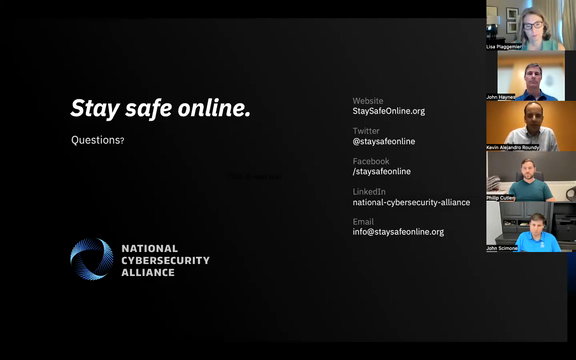NortonLifeLock Shares How to Help Protect Kids From Cyberbullying
NortonLifeLock and the National Cybersecurity Alliance help parents and educators address cyberbullying
NortonLifeLock Blog | Corporate Responsibility
By Kevin Alejandro Roundy | Technical Director, Norton Labs
One of the biggest online threats facing people of all ages, but especially teenagers and young adults, is cyberbullying. Cyberbullying is a growing problem in schools due to the anonymous nature of the internet and the speed in which rumors, threats, and embarrassing photos can be disseminated. Our nonprofit partner, the National Cybersecurity Alliance (NCA), launched a campaign to help parents and educators understand what to do about cyberbullying, and I am proud to be a part of it.
Last week, I joined NCA and a panel of experts on a webinar to help raise awareness about cyberbullying, while sharing tips for preventing and reporting it with nearly 200 attendees.
What is Cyberbullying?
We began by defining cyberbullying. The term itself is subjective and changes as technologies change, but the government defines bullying as unwanted, aggressive behavior that involves a real or perceived power imbalance (1). Online, that can mean anything from private photos being shared without one’s permission to threatening or hurtful messages. Bullies can even impersonate their victim with fake accounts, stealing their social identity to cause more harm.
Cyberbullying Tips
With children starting their online lives earlier and earlier, technology has enabled bullying on a scale today that didn’t exist generations ago. It’s vital to keep that in mind when you or your children are posting or browsing. Here are a few tips:
-
Keep Some Secrets. You might log into social media for an escape, or to post that cute picture from the hike you went on. But be careful about who can access details of your children’s interests, habits, or even employment to reduce their exposure to bullies they don’t know. Set your privacy settings on your Instagram and Facebook accounts to ‘private’ so that only people know can see your information, not the general public.
-
Avoid Escalating the Situation. Responding with hostility often provokes bullies, most of whom thrive on the reaction of their victims. If you or your child receives unwanted emails or messages, consider blocking the sender and reporting it on social media to try and stop the problem immediately. You should also document the bullying, keeping a record of online activities and relevant dates and times.
-
Discuss Online Safety with Your Children. As your children begin to spend time online, they are likely to identify social media influencers that they admire and might want to emulate. This may lead to them accepting any and all followers on social media and to over-sharing personal images and videos and sensitive information, which will dramatically increase their risk of cyberbullying. For help beginning these conversations with your children, use our free resource The Smart Talk ,which helps families set digital safety ground rules together.
-
Report Cyberbullying to the Authorities. If you’ve taken measures to stop the problem, but it’s continuing or even escalating, you should reach out to get help. Many school districts have online reporting options, while clubs, sports teams, places of worship, and other extracurricular groups should have someone who can step in and help. If this doesn’t address the problem, or you fear for the victim’s safety, it’s time to contact local law enforcement. While there is a distinction between free speech and punishable offenses, law enforcement officials can help sort out the legal implications and can help let the bully know that you are serious.
For more tips, check out NCA’s new Cyberbullying Awareness Toolkit or watch the webinar recap here.
Cyberbullying is a serious issue, and we can work together to learn how to identify, prevent, and stop it to make the internet a kinder place for our kids.



